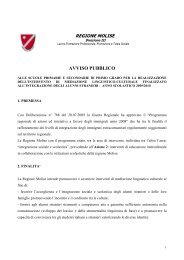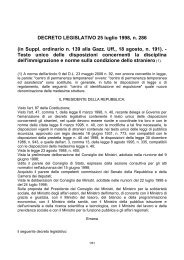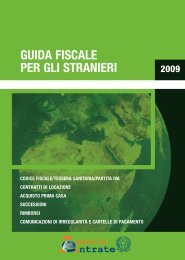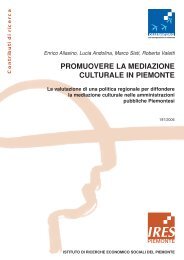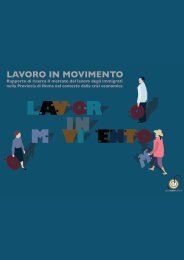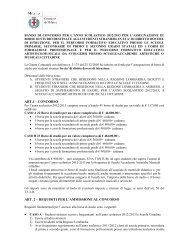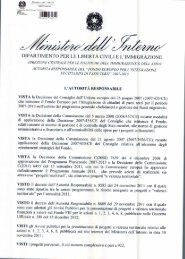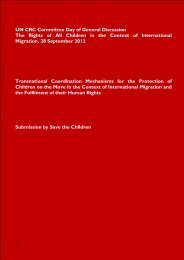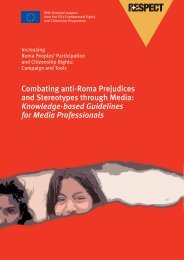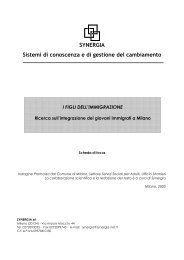Using EU Indicators of Immigrant Integration - European ...
Using EU Indicators of Immigrant Integration - European ...
Using EU Indicators of Immigrant Integration - European ...
- No tags were found...
Create successful ePaper yourself
Turn your PDF publications into a flip-book with our unique Google optimized e-Paper software.
Outcome: In the context <strong>of</strong> migrant integration indicators, the term ‘outcome’ describes a (statistical)result <strong>of</strong> a certain indicator, usually measured in rates. Outcomes are compared between immigrantsand non-immigrants (gaps). In general, outcomes <strong>of</strong> indicators can describe the situation <strong>of</strong> integration<strong>of</strong> immigrants in a certain area <strong>of</strong> society.Overcrowding rate: The number <strong>of</strong> rooms in the house to the number <strong>of</strong> people. A person is consideredas living in an overcrowded dwelling if the household does not have at its disposal a minimumnumber <strong>of</strong> rooms equal to: one room for the household; one room per couple in the household; oneroom for each single person aged 18 or more; one room per pair <strong>of</strong> single people <strong>of</strong> the same genderbetween 12 and 17 years <strong>of</strong> age; one room for each single person between 12 and 17 years <strong>of</strong> ageand not included in the previous category; one room per pair <strong>of</strong> children under 12 years <strong>of</strong> age.Overqualification rate: share <strong>of</strong> the population with a high educational level (i.e. having completedtertiary education, ISCED 5 or 6), and having low- or medium-skilled jobs (ISCO occupation levels 4 to 9)among employed persons having attained a high educational level.Property ownership: Ratio <strong>of</strong> property owners to non-property owners among immigrants and thetotal population.Share <strong>of</strong> 30-34-year-olds with tertiary educational attainment: The share <strong>of</strong> the immigrant populationthat has achieved ISCED level 5 or 6.Social exclusion: In the <strong>EU</strong> context, a situation whereby a person is prevented (or excluded) fromcontributing to and benefiting from economic and social progress.Social inclusion: In the <strong>EU</strong> context, a framework for national strategy development, as well as for policycoordination between the Member States, on issues relating to tackling poverty and social exclusion.Social inclusion is an umbrella term that covers the inclusion <strong>of</strong> groups in society in regards to income,poverty, health and housing.Socio-economic background/ socio-economic status: Economic and sociological combined totalmeasure <strong>of</strong> a person’s position in relation to others in society, usually measured by income, occupationand education.Unemployment rate: The share <strong>of</strong> persons between 20-64 who were without work during the referenceweek, were currently available for work and were either actively seeking work in the past fourweeks or had already found a job to start within the next three months.72



